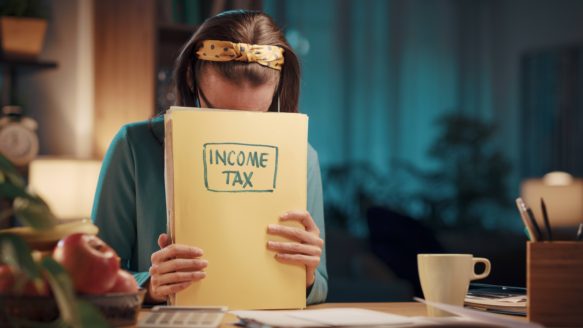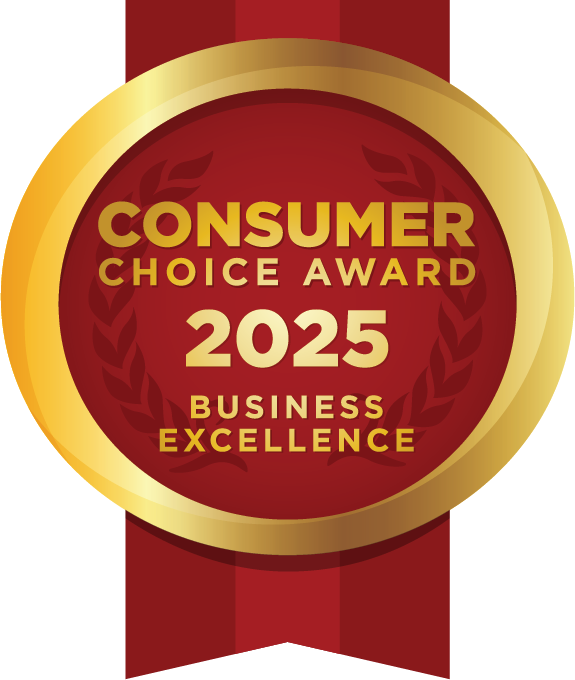
Consumer Proposal Alberta
If you’re feeling overwhelmed or stressed out by debt, rest assured that you’re taking the right step by researching the various options available for regaining control of your financial situation. Ultimately, the best debt repayment option for you is the one that fits with your individual circumstances, and the best way to figure that out is to do your own research, so well done on taking this first step.
Statistics Canada reported that, over the course of the year leading up to January 31, 2023, consumer bankruptcies declined by 8.97%, while the number of consumer proposals surged by 24.3%.
In Alberta, consumer proposals are often sought as a debt relief option, but it’s essential to understand that there are other alternatives as well. This blog post will provide you with an overview of consumer proposals in Alberta and other debt repayment solutions, such as the Orderly Payment of Debts (OPD) program.
In this article, we’re going to cover:
What is a Consumer Proposal?
How to File a Consumer Proposal?
What is the Difference Between a Consumer Proposal and OPD?
Why Do People Choose the OPD Program?
Becoming Financially Literate
A Plan, a Goal and a Single Monthly Payment
Is a Consumer Proposal Right For You?
Frequently Asked Questions
What is a Consumer Proposal?
In simple terms, a consumer proposal is an alternative to bankruptcy and is an agreement between you and your creditors, allowing you to repay a portion of your debts. It is a legally binding process administered by a Licensed Insolvency Trustee (LIT) who will work with you to develop a proposal—an offer to pay creditors a percentage of what is owed to them.
While federally legislated like the OPD program and other debt consolidation options, consumer proposals are administered by for-profit companies and usually require you to pay fees upfront. The proposal is subject to a vote by the creditors and if 50% or more vote in favor, then it is binding for all creditors. While consumer proposals can reduce the amount of debt you need to pay back, there are pros and cons to consider.
How to File a Consumer Proposal?
You cannot file a consumer proposal on your own, so it is important to understand the process. There is a lot of legal and financial language, along with legally binding documents that can make this process feel overwhelming. Below we’ve simplified the process to file a consumer proposal into 5 steps.
Step 1: Choose a Licensed Insolvency Trustee (LIT)
The first step in the process of filing a consumer proposal is to find a trusted Licensed Insolvency Trustee (LIT) who can guide you. You can use a government tool to locate active LITs near you. Once you’ve identified potential trustees, do a bit of research – check their qualifications, accreditation status with the Better Business Bureau, and online reviews to ensure you’re in capable hands.Our unbiased credit counsellors are happy to answer any questions you might have about consumer proposals.
Step 2: Review Your Finances
Together with your LIT you will go through your finances including your assets, liabilities, and monthly expenses. This review will identify where you’re having difficulty repaying debt so you can come up with a plan.
Step 3: Develop Your Proposal
Once you’ve chosen an LIT to work with you on your Consumer Proposal, and reviewed your finances, it’s time to create a repayment plan that suits your situation. During this process, you and your LIT will draft a budget that works for both you and your creditors, with your LIT determining your repayment capacity. Payments are usually set on a regular basis, but the schedule can be adjusted to fit your financial circumstances. The maximum duration is 60 months.
Step 4: Secure Creditor Approval
Now, here’s the nerve-wracking part – will your creditors approve? Creditors will either accept, reject, or request a meeting to discuss. The decision is based on the majority vote – if most creditors agree, your proposal moves forward. Even if some creditors disagree, they’re bound by the decision.
Once approved, your proposal becomes legally protected under the Office of the Superintendent of Bankruptcy (OSB). This means you’re shielded from legal actions and collection efforts.
Step 5: Honor the Payment Plan
As your proposal takes effect, it’s crucial to stick to the repayment plan you’ve agreed upon. Think of it like staying on a clear path. If you stumble or get lost, reach out to your LIT. Also, you’ll often need to attend mandatory financial counseling sessions to equip you with better financial skills for the future.
What is the Difference Between a Consumer Proposal and OPD (Orderly Payment of Debts)?
Before committing to a consumer proposal, it’s important to explore all available debt repayment options, such as the OPD program in Alberta. There are key differences between a consumer proposal and the OPD program.
The OPD program offers numerous benefits, including:
- No start-up fees
- Fixed 5% annual interest rate
- Federally legislated
- Protection against creditor action
- Collection calls and wage garnishments stop
- Consolidation of all unsecured debts into one program
- Access to a non-profit credit counsellor for guidance and support
- Improved money management skills through free financial seminars and courses
Debts covered under the OPD program include credit cards, personal loans, overdrafts, lines of credit, unsecured loans, utility and cell phone bills for discontinued services, student loans, payday loans, income tax, and overpayment of social services.
Why Do People Choose the OPD Program?
Fixed 5% Annual Interest Rate
Clients such as Floyd, find consolidating all their debts into one monthly payment at a fixed 5% annual interest rate to be an easy, stress-free way to get out of debt. With the cost of borrowing rising on everything from mortgages to car loans, the promised rate of 5% on the OPD program is seen by many to be fair.
Paying Back What You Owe
One thing we often hear from our clients is that they want to pay back the money they borrowed. There is often a sense of duty and responsibility to repay their creditors what they are owed. This is how single parent Robert felt, saying: “I owed my creditors money, and it wasn’t their fault that I was in the financial mess that I was in.”
Changing Your Money Mindset
Unlike a consumer proposal or bankruptcy, the OPD program is a hands-on, life-changing intervention in your financial life that seeks to fundamentally change your relationship with money for the better and ensure that you become financially free. See the excerpt from Robert’s Success Story below.
“Finishing my program with Money Mentors gave me anxiety,” he shared. “After so many years of monthly debt payments, I all of a sudden had $700 a month for myself again. I didn’t know what I was going to do with that money, nervous I’d slip into my old ways.”
Thankfully, Robert’s credit counsellor helped him learn how to navigate life post-OPD program. He encouraged Robert to find something else to focus his attention on, to start saving for more financial goals. And Robert has done just that. Over the past eight months, he has managed to save up enough money for a down payment on a new house―an incredible feat that he never once thought was possible!
“I currently have more money in my bank account than I’ve ever had in my life!” Robert said happily. “It’s eye-opening, too, thinking how easy it would be to lose all that again if Money Mentors hadn’t helped me build a solid budget and develop strong personal finance skills.”
Becoming Financially Literate
As part of the OPD program, you are required to take the Budget Bootcamp course, and then you will have access to other free online courses such as Credit Cross Training and Fraud Detection and Prevention. Clients often comment that the financial literacy they acquire from being on the OPD program is life-changing. This happened for Sunny after he learned how to budget and save, saying: “I now put 10 percent of my pay cheque into my savings account, which is something I’ve never done before. And I’ve learned how to prepare for holiday expenses, so I don’t go into debt.”
A Plan, a Goal and a Single Monthly Payment
We often hear from our clients that working with a dedicated credit counsellor to come up with an organized plan gives them a sense of calm and structure in their lives. Additionally, the single monthly payment helps to declutter their debt payments and allows them to organize their finances more effectively. This structure and organization allows them a clearer line of sight on reaching their goal and becoming debt free.
Is a Consumer Proposal Right For You?
Dealing with debt can be a stressful and emotionally challenging experience. However, it’s important that you research all the options available to you so that you can make the right decision for your individual circumstances.
To ensure you’re making an informed decision, chat with an unbiased non-profit credit counsellor, who can help you assess your financial situation and guide you through all the options available to you. Remember that overcoming debt is a journey that requires patience, commitment, and a solid plan in place.
As you weigh your options, remember that knowledge is power! By understanding the pros and cons of consumer proposals and the OPD program, you will be better equipped to choose the path that leads you towards a healthier financial future.
For more information, book an appointment with a credit counsellor or give us a call.
Frequently Asked Questions
Is a consumer proposal a debt relief option in Alberta?
Yes, consumer proposals are a debt relief option in Alberta, and many individuals choose this route to address their financial struggles. However, it’s crucial to consider all available options before committing to a consumer proposal or any other debt repayment plan.
Is a consumer proposal a good idea?
Deciding whether or not a consumer proposal is a good idea for you is going to depend on your own individual situation. The most important thing you can do is to research all of the options available and make an informed decision. If you have read this article and are still unsure, give one of our credit counsellors a call.
How much do you pay back in a consumer proposal?
How much you pay back in a consumer proposal depends on the legally binding agreement that you come to with your LIT and with your creditors. Once you have agreed on a proposal with your LIT, it is then put to your creditors for a vote. You will usually have to pay fees upfront as well as the amount of debt you agree to pay back.
What is the downside of a consumer proposal?
One of the downsides to a consumer proposal are the start-up fees. Unlike the OPD program, which is managed by a non-profit credit counselling agency on behalf of the Government, consumer proposals are operated by for-profit companies and usually come with up-front fees.
Have questions?
Need more information or want to talk to an accredited financial counsellor for peace of mind? Let us help.
Call 1-888-294-0076 or book an appointment. It’s free for all Albertans.








